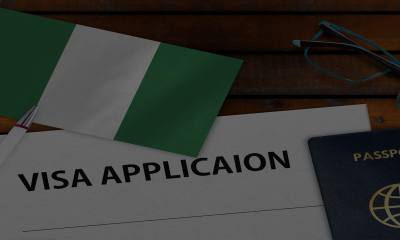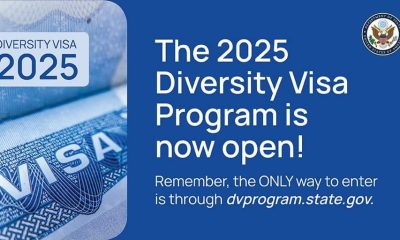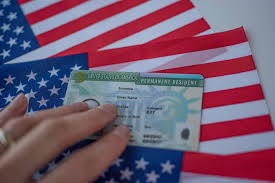Travel
7 Easiest and SAFE Ways to Move to Canada
Canada is one of the most popular destinations for people looking to relocate. With its strong economy, excellent healthcare system, high quality of life, and a reputation for being welcoming to immigrants, it’s no wonder many aspire to make Canada their home.
If you’re considering moving to Canada, you’ll want to explore options that are both straightforward and safe. Here are seven of the easiest and safest ways to move to Canada.
7 Easiest and SAFE Ways to Move to Canada
-
Express Entry Program
The Express Entry system is one of the fastest and most efficient ways to immigrate to Canada, particularly if you’re a skilled worker. It operates based on a points system that assesses candidates based on age, education, work experience, and language skills in either English or French.
How it works:
- Submit your profile online to be placed into a pool of candidates.
- Your score will determine if you receive an Invitation to Apply (ITA) for permanent residence.
- If selected, processing can take as little as six months.
Pros:
- Fast processing times.
- Safe and well-regulated.
Cons:
- Competitive, as you need a high Comprehensive Ranking System (CRS) score.
-
Provincial Nominee Program (PNP)
If you want to live in a particular province or territory in Canada, the Provincial Nominee Program (PNP) may be ideal. Each province has its criteria based on its economic and demographic needs.
How it works:
- Apply for a nomination from the province you want to live in.
- If nominated, you can apply for permanent residence through the federal government.
Pros:
- More accessible for people who may not have enough CRS points in Express Entry.
- Tailored to the needs of specific regions, making it easier to qualify.
Cons:
- Slower than Express Entry in some cases.
-
Study Permit
Studying in Canada is not only an excellent opportunity for education, but it also opens doors to permanent residency. Canada offers pathways for international students to remain after their studies.
How it works:
- Apply to a designated Canadian learning institution.
- Once accepted, apply for a study permit.
- After graduation, you can apply for a Post-Graduation Work Permit (PGWP) and later for permanent residency through programs like Express Entry or PNP.
Pros:
- Gain Canadian education and work experience, increasing your chances of permanent residency.
- Safe and legal pathway with the benefit of a world-class education.
Cons:
- Expensive, considering tuition fees and living costs.
-
Family Sponsorship
If you have family members who are Canadian citizens or permanent residents, they can sponsor you to move to Canada. This is one of the most accessible ways if you qualify.
How it works:
- Your sponsor must be a Canadian citizen or permanent resident.
- They must commit to financially support you while you settle in Canada.
Pros:
- One of the most secure and reliable ways to immigrate.
- You can bring your spouse, children, and dependent relatives under the right conditions.
Cons:
- Processing times can vary significantly.
- The sponsor must meet specific income requirements.
-
Start-Up Visa Program
If you’re an entrepreneur with an innovative business idea, Canada’s Start-Up Visa program could be your route to permanent residency.
How it works:
- You must have a qualifying business.
- Secure support from a designated organization such as a venture capital fund, angel investor group, or business incubator in Canada.
- Meet language and settlement funds requirements.
Pros:
- Encourages innovation and entrepreneurship.
- Permanent residency from the outset.
Cons:
- Business must be viable and approved by a designated organization.
-
Working Holiday Visa
Canada participates in the International Experience Canada (IEC) program, which offers young people from specific countries the opportunity to work in Canada temporarily.
How it works:
- Apply for a work permit through the IEC if you’re from an eligible country.
- Work in Canada for a set period (usually up to two years) and gain valuable experience.
Pros:
- Gain Canadian work experience that could help you transition to permanent residency.
- Great for young people looking for temporary work and travel.
Cons:
- Not available to everyone (limited to certain age groups and countries).
- Temporary, so you’ll need to apply for permanent residency separately.
-
Caregiver Program
Canada has programs that allow caregivers to come to the country and apply for permanent residency while they work.
How it works:
- You must have a valid job offer to work as a caregiver for children, elderly, or people with high medical needs.
- After working for two years, you can apply for permanent residency.
Pros:
- Relatively straightforward for those with the right skills.
- Allows you to apply for permanent residency after gaining work experience.
Cons:
- Limited to specific caregiving roles.
- Can take time to complete the work experience requirement before applying for PR.
How to get 100% Canada visa?
While there’s no guaranteed way to get a 100% approval rate for a Canada visa, following these steps can significantly improve your chances:
-
Understand the Visa Type and Requirements:
- Determine the appropriate visa: Are you applying for a tourist visa, study permit, work permit, or another category?
- Research specific requirements: Familiarize yourself with the eligibility criteria, necessary documents, and application fees for your chosen visa.
-
Gather Strong Supporting Documents:
- Proof of financial means: Demonstrate that you can support yourself financially during your stay.
- Travel itinerary: Provide a detailed plan of your trip, including accommodation, transportation, and activities.
- Letters of invitation: If applicable, obtain letters from family or friends in Canada inviting you.
- Employment or study documents: Provide proof of your current employment or study status.
-
Complete the Application Accurately:
- Follow instructions carefully: Ensure that all information is correct and complete.
- Provide honest answers: Avoid misrepresentations or omissions.
- Seek professional help if needed: If you’re unsure about any part of the application, consider consulting an immigration consultant.
-
Submit Your Application Early:
- Plan ahead: Allow ample time for processing.
- Avoid last-minute rush: Submit your application well in advance of your planned travel dates.
-
Address Any Requests for Additional Information:
- Respond promptly: If you’re asked for more documents or information, provide it as soon as possible.
- Be clear and concise: Clearly explain any discrepancies or unusual circumstances.
-
Be Prepared for Biometric Enrollment:
- Understand the process: Be aware of the biometrics requirements and how to schedule an appointment.
- Follow instructions: Provide your fingerprints and photograph as requested.
Remember: The approval of your visa depends on various factors, including your individual circumstances and the assessment of the immigration officer. By following these steps and providing a strong application, you can significantly increase your chances of a successful outcome.
How much bank balance is required for a Canada tourist visa?
The exact bank balance required for a Canada tourist visa can vary depending on several factors, including:
- Length of your stay: Longer stays typically require more funds.
- Purpose of your trip: If you’re planning on attending a conference or event, you might need to provide proof of financial support for those expenses.
- Your travel companions: If you’re traveling with others, you might need to demonstrate that you can support both yourself and them.
- Your personal circumstances: Factors like your employment status and income can also be considered.
Generally, Canadian immigration authorities recommend that you have enough funds to cover your accommodation, transportation, food, and other expenses for the duration of your trip. A common guideline is to have approximately CAD 10,000 (or its equivalent in your currency) available in your bank account. However, this is just an estimate, and the actual amount required can be higher or lower.
It’s important to note that having sufficient funds doesn’t guarantee a visa approval. Other factors, such as your travel history, ties to your home country, and the purpose of your visit, will also be considered.
Conclusion:
Moving to Canada is achievable through various safe and structured pathways, depending on your background, skills, and goals. Whether you’re a skilled worker, entrepreneur, student, or caregiver, Canada offers immigration opportunities tailored to different needs. Each program has its requirements, but with proper planning and preparation, you can find a route that works for you. Keep in mind that the immigration process can be complex, so consulting with an immigration expert is often a good idea to ensure your application is successful.










